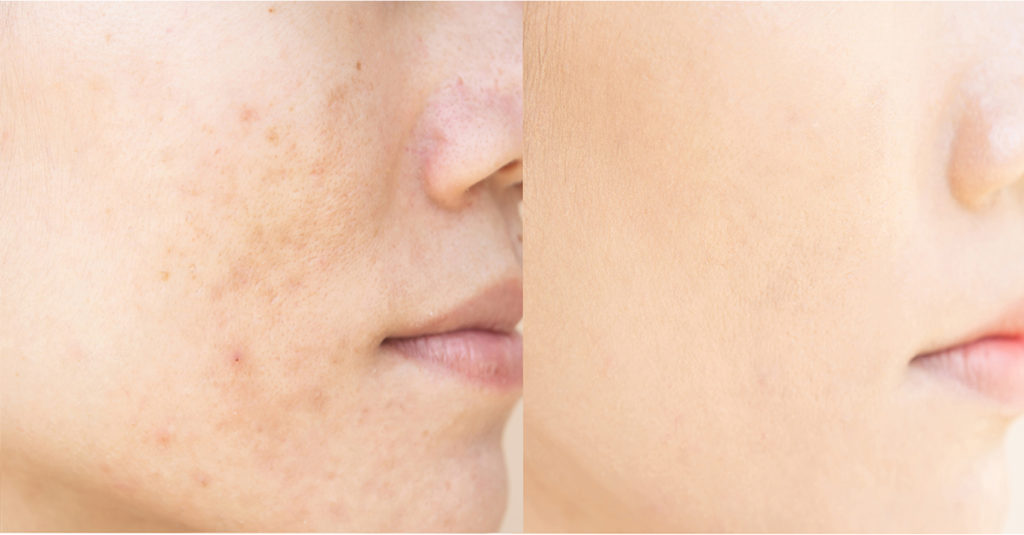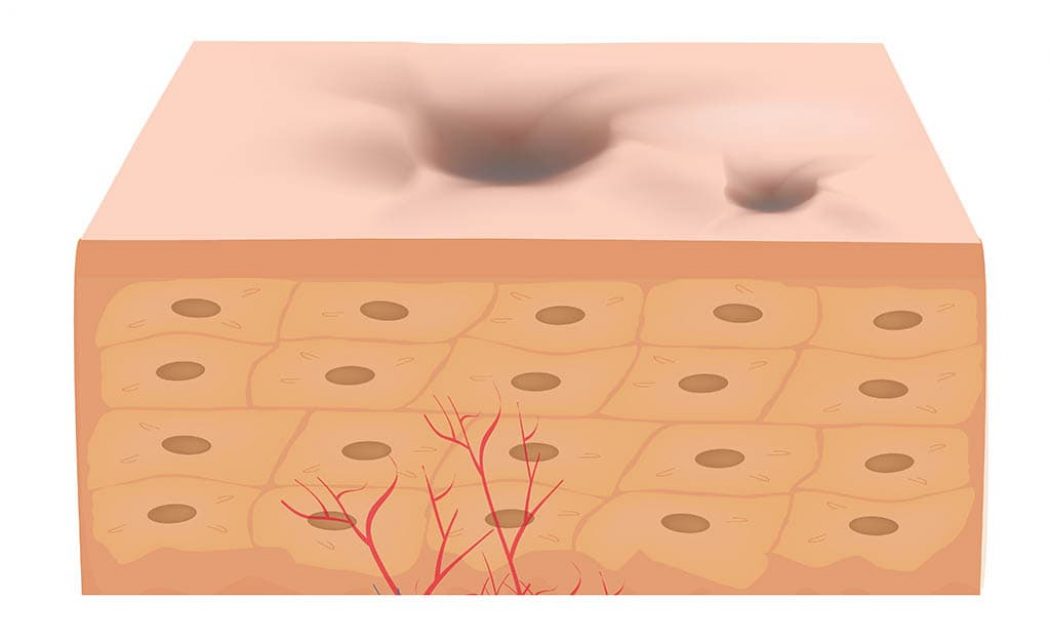Have you ever wondered why do acne scars form? You’re in good company. Up to 40% of acne sufferers tend to develop some scarring due to their condition. The good news is most superficial acne scars will heal on their own without leaving a mark.
Deeper scars, on the other hand – the kind caused by trauma to the skin and surrounding tissue – can become permanent and require professional acne scar treatment. You can recognize deep acne scars by the textural changes they cause in the skin. These are known as “pot marks,” appearing as indentations or depressions that follow after a bout of severe or chronic acne.
How do acne scars happen?
All acne scars start as blemishes that have become inflamed, causing the pores to get clogged with excess oil, sebum, dead skin cells and bacteria. As the pores become engorged with debris, they can rupture and spill their contents into the skin, causing an infection.
If the lesions are shallow, they normally heal quickly without leaving any trace. What causes pitted acne scars, however, is when the rupture of the pore wall and subsequent infection is so severe, it creates very deep indentations. These can appear uneven in texture and appearance.
These texture abnormalities that often accompany acne scars happen as the skin attempts to repair itself by generating new collagen fibers. Unfortunately, the patched up skin is never as smooth and perfect as the skin you were born with.
Different types of acne scarring
To better understand how do acne scars form, it’s useful to know they happen when there’s loss of tissue in the deeper dermal layers. The medical term is “atrophic scars,” and these can vary in size and appearance. The following is a list of different types of atrophic acne scars:
Ice pick scars
Ice pick scars are small, hollow depressions on the skin’s surface. These typically occur on the cheeks and can be very difficult to treat due to their deep nature. Getting rid of ice pick scars can require a gradual, multi-step approach with procedures such as fractional laser resurfacing and TCA skin peels.
If the scars are persistent or particularly deep, they may require a surgical technique called punch excision – during treatment the surgeon punches a whole around the scar then sutures the hole to remove the scar.
Boxcar scars
Boxcar scars are shallow to medium in depth with well-defined edges. You’ll find these types of scars located on the cheeks, jaw and temples. They’re easier to treat than ice pick scars because they are relatively superficial in depth. Boxcar scars respond very well to fractional lasers, skin peels, dermal fillers and medical skincare products.
Rolling scars
Rolling scars can occur at varying depths, with some areas being anchored to deeper structures. These types of scars are called “rolling” because they have sloping edges that give them a wavy and uneven appearance.
Treating rolling acne scars requires a multi-step process over several visits, just as with ice pick scarring. Subscision surgery may be recommended to release the tethers or “anchors,” followed by fractional laser resurfacing, skin peels and dermal fillers to smooth and fill the shallow depressions left behind.
Other types of acne scarring
Hypertrophic or keloid scars are caused when the body produces excess collagen during the acne healing process, resulting in a mound of raised tissue on the skin’s surface. These are most common on areas such as the jawline, chest, back, and shoulders. Raised scars can only be removed with surgery.
Post-inflammatory hyperpigmentation (PIH)

Technically not a scar, post-inflammatory hyperpigmentation is a patch of discolored skin (red or brown) that’s left behind after the acne heals. It will usually resolve on its own over time. If you wish to speed up the process, however, a series of IPL (intense pulsed light) sessions will remove the pigmented lesions and results in smoother skin and more even tone.
Have acne scars? Top 3 reasons to have them treated
- Smoother, more even skin tone and improved appearance
- Improved self-esteem and confidence that comes with having beautiful skin
- Improved overall skin health and vibrant complexion
Dr. Ammar Mahmoud is a NYC physician and surgeon specializing in professional acne scar treatment in NYC. To learn more about the right procedure for you, we invite you to schedule your no-obligation consultation at Alinea Medical Spa Scar & Laser Skin Care NYC.




